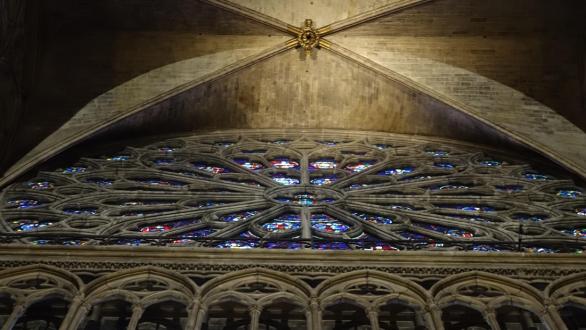This week’s fire at Paris’ Cathedral of Notre Dame is bringing a realization that historic buildings may be prone to such tragedies. The fire spread through the wooden attic, bringing down its 300-foot spire and engulfing two-thirds of the roof, and occurred over just an hour.
Building the cathedral attic required the wood of more than 1,300 trees. Attics tend to be dry spaces and, when dust and debris accumulate, they can be even more flammable, fire experts say.
“Once these massive timber structures start to burn, they almost never can be stopped,” Jonathan Barnett, an international fire safety authority at Basic Expert in Australia, told The New York Times. “We focus on their masonry walls and forget all the massive timber within.”
Firefighters were able to save the Norte Dame’s two massive bell towers and at least one of the stained glass windows, but the quickness of the fire is testament that more may need to be done to protect historic buildings, which may be among the most vulnerable to fires. The cause of the Notre Dame fire is still under investigation.
In 1979, the Trinity Congregational Church, a 19th-century church in Gloucester, Mass., caught fire and burned to the ground within minutes. Renovators were using a blowtorch to melt old lead paint in the building, instead of scraping it off, when the fire first broke out. Three years ago, the Serbian Orthodox church in Manhattan was also destroyed by a fire.
“When you combine ancient webs of timber and a large volume of open space, you have the ideal situation for a raging inferno,” Forbes.com reports.
The National Fire Protection Association says that about 31 American congregations burned from 2007 to 2011.
Fire safety experts say historic cathedrals’ wooden roofs are made of flammable materials and can be difficult to reach when fires break out.
“These cathedrals and houses of worship are built to burn,” Vincent Dunn, a fire consultant and former New York City fire chief, told The New York Times. “If they weren’t houses of worship, they’d be condemned.”
But a big question remains: How do you retrofit historic buildings to meet fire safety codes without destroying part of the history? The U.S. Department of Interior’s Advisory Council on Historic Preservation and the General Services Administration published “Fire Safety Retrofitting in Historic Buildings” in 1989.
“Fire safety improvements support historic preservation objectives, as such improvements ultimately will protect the property from extensive damage in a fire incident,” the report states. “In most cases, these improvements can be accomplished without significantly altering the historic features of the property.”
Source: “Notre Dame Fire Shows Just How Vulnerable to Disaster Historic Churches Are,” Forbes.com (April 16, 2019) and “How the Notre-Dame Cathedral Fire Spread,” The New York Times (April 16, 2019)













